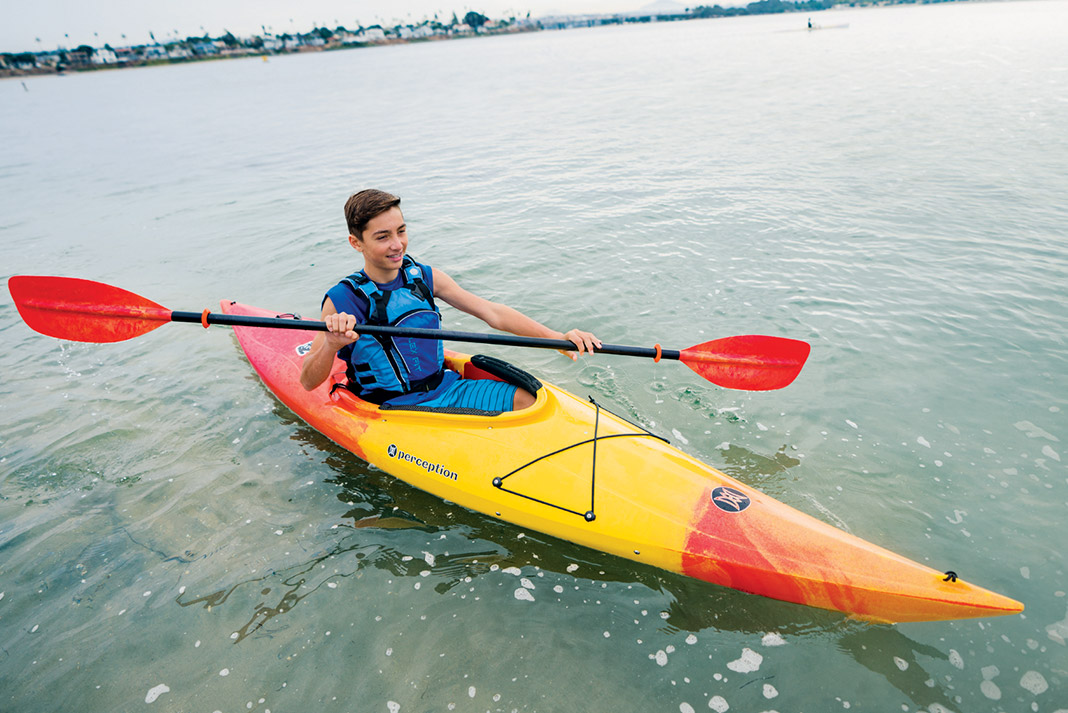Products You May Like
There may be no feeling more fulfilling for a paddler than the opportunity to share the water with the next generation of young paddlers. Tandem kayaks are a great solution for getting young children on the water, but once they’re old enough, most kids will want to pilot their very own kayak.
Exploring in their own kayak is an exciting time for a child. It brings the same sense of wonder for our waterways and independence that is a major reason we have taken on the sport ourselves.
Ensuring kids have a positive experience means getting them a kayak (and paddle) that fits their smaller bodies and is lighter and easier to maneuver. Even small adult kayaks are too wide and deep for most kids to easily reach the water with their paddle. If you want children to have a safe and enjoyable paddling experience, youth kayaks and paddles offer dimensions and designs suitable for kids.
The first question parents often ask is, how old does a child need to be to paddle solo?
The answer depends on what you hope to accomplish on the water. If you’re out for a fun float with the family and don’t have to make miles, younger children (ages 5 and up) will have a blast piloting their own kids kayak. From ages 5 to 12, kids can easily paddle short distances on calm waters in their own child-sized kayak. If you’re on a family kayak tour that will cover more distance, little ones won’t be able to keep up. For ambitious trips, small children are best paired with adults in tandem kayaks.
A good way to think about kids paddling their own kayak is to compare it to bicycling. You can put a very young child on a strider bike and she’ll have fun riding to the end of the block and back. If you think the same child would enjoy a 5-mile road ride, forget it. The only real way to know what your children are capable of is to get them out on the water with the appropriate gear. With experience, you’ll know what they can handle.
Once children are ready to paddle a kayak on their own, it’s time to find the best kids kayak for their age and paddling goals. Read on to find advice on buying a new or used youth kayak, as well as resources to help narrow your search.
Our picks: Best kids kayaks for 2022
Find our picks for the best youth kayaks below. Click on the boat you’re interested to be taken to our Paddling Buyer’s Guide, where you can learn about specs, read user reviews, and compare to other models.
Best Kayaks for Kids and Youth
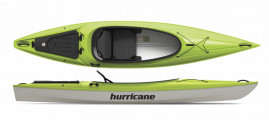
Hurricane Kayaks
Prima 125 Sport

Hobie
Mirage Compass
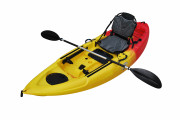
Brooklyn Kayak Company
BKC FK285 Sit-On-Top Angler Solo Kayak
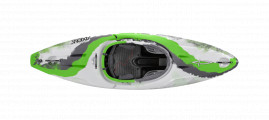
Dagger
Axiom 6.9 Aurora
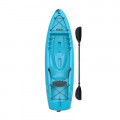
Lifetime
Hydros 85
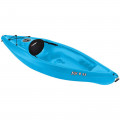
Sun Dolphin
Fiji 8 SS
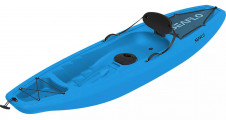
SEAFLO
SeaFlo 8.8
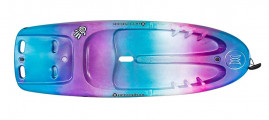
Perception Kayaks
Hi Five 6.5

Hobie
Mirage Revolution 11
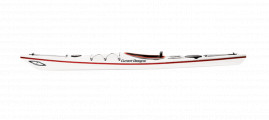
Current Designs
Raven
Shop kids & youth kayaks
Once you’re ready to start shopping, check out the Paddling Buyer’s Guide for a comprehensive database of every kids kayak on the market, including reviews, specifications, prices and where to buy. Use the links below to filter your search results by type, brand and popular retailers.
Shop by brand
Shop by type
Shopping for a used youth kayak?
One of the biggest challenges most paddling families face when looking for kayaks is affordability. There are lots of low-price recreational kayaks available, but the majority of these are too wide for small children to paddle effectively. Other discount kayak options are little more than beach toys—short, lightweight boats are fine for horsing around but not for paddling from here to there. If you’re on a tight budget, consider scouring the used market for a quality used youth kayak rather than heading to the discount store.
As children outgrow their kayaks, secondhand kids’ kayaks find new life on the used market. Set up alerts for search terms like “kids kayak” and “youth kayak” on Craigslist or Facebook Marketplace, and keep these tips in mind when you find a match.
Know what type of kayak is being listed, and what kayak style is most suitable for your child. “Kids kayak” is a fairly broad term that covers a range of sizes, materials and styles of kayak. For example, a 6-foot kids kayak might be most suitable for 5- to 8-year-olds, while children ages 8 to 12 may benefit from the increased capacity of an 8-foot youth kayak. Be sure you have all the details, and ask the seller where and how they used the kayak.
If you are unfamiliar with the kayak model, find it in our Paddling Buyer’s Guide to see specifications and intended use, and be sure it matches the kind of kayaking you’ll do.
If feasible, bring your kid along to scope out the kayak. Have them sit in the kayak and see how it fits. This is also a great way to bring them an immediate sense of ownership and responsibility for their kayak.
Inspect the kayak for damage before committing to a purchase. Kid kayaks are durable, but cracks or dents in the plastic hull are possible if the kayak was improperly stored. If you are at the seller’s property, pay attention to how the kayak was stored. Has it been left out in the sun and heavily faded? UV deteriorates plastic, which can lead to cracking or warping down the road.
Ask the seller to meet at a location where you can take the kayak for a test paddle. Bring a paddle, appropriate clothing and PFD or lifejacket for your child if they are going to try the kayak, and supervise their test paddle. This is the best way to see whether the youth kayak is comfortable and sized appropriately for your child.
For more tips on what to look for when selecting a used kayak, read our article How To Buy A Used Kayak.
Kids kayak buying guide
Once children are ready to start paddling their own kayak, your first question will likely be, “What should I look for in a kids kayak?” Read on for tips on choosing the right kids kayak to meet the needs of your paddling family.
Return on investment
Kayak companies know it’s good for the paddlesports industry to encourage parents to get their whole family out on the water, but the cost of producing good small kayaks isn’t much less than building bigger boats. One way around this challenge is to simplify the features in the kayaks. Children’s designs frequently have simple layouts and lack the bulkheads and hatches common in adult kayaks. Fewer options keep both cost and weight down, which makes it easier for kids to carry and control their own boats.
Of course, there are some kids kayaks nearly as full-featured as their grown-up equivalents. Children’s touring kayaks are built with all the safety features of full-sized boats, and this means you should expect the price of these kayaks to be higher. The bottom line is the closer a youth kayak is to a full-sized kayak, the closer the price will be to an adult kayak.
Performance matters
The other big challenge with children’s kayaks is performance. If you want your children to have a good time out on the water with you, they need to be in boats matched to their size and strength. It might be tempting to put kids in cheap recreational kayaks, but most of these boats are way too big for small paddlers to handle.
Small recreational boats may be short, but they are also wide. A nine-foot rec kayak will float a full-sized adult weighing 200 pounds or more. Kayaks like this are often 30 inches wide. Put a 60-pound child into this same kayak and she’ll hardly be able to reach the water with her paddle. When it comes to kids’ fun on the water, big person rec kayaks are out.
Children’s kayaks need to be matched to the paddler’s size every bit as much as adult kayaks do. This typically means being narrower than 25 inches, sometimes as narrow as 20 inches. Children under 100 pounds find such kayaks plenty stable and much easier to control.
Width is a significant factor in kayak performance, but length comes into play too. Longer kayaks are faster, but they have more drag in the water. Children don’t have the strength to power a big boat effectively. This means kid kayaks are typically much shorter than similar models geared toward adults. Almost all children’s kayaks are under 12 feet long, and many are shorter than 10 feet. The shorter length of children’s kayaks combined with less powerful paddlers means adults will need to back off a bit during a family day on the water. No kayak designed for children will keep pace with longer adult boats.
Pick the best fit
Recreational kayaks for children come in both sit-on-top and sit-inside models. These kayaks are narrower versions of adult recreational kayaks that are easier for kids to control. The benefits of sit-on-top designs are they can’t be swamped and are easy to climb back onto if you’re playing in the water. Sit-inside kayaks will keep children drier and warmer if the water or air temps are a little cooler. Recreational kayaks are ideal for splashing around at the beach or cottage and exploring small lakes and gentle rivers.
Kids touring kayaks are longer and narrower than recreational kayaks. They are sit-in designs with smaller cockpits. Some designs have bulkheads (interior walls within the kayak hull that ensure flotation) and storage hatches like adult kayaks. Others skip these features to keep weight and cost down. The narrower width and increased length of these boats help children to develop paddling skills and keep pace with full-sized kayaks on longer tours.
Whitewater kayaks for kids can be either sit-on-top or sit-in style. Sit-on-top designs are the best choice for casual river paddles combining small rapids and swimming breaks. For kids who are stoked on whitewater and want to learn the more technical aspects of whitewater paddling, a child-sized sit-inside whitewater kayak is the way to go.
Once children hit about 100 pounds, you’ll have a few more options. Kayaks aimed at smaller adults are a good choice for bigger kids. These kayaks don’t come at a child’s price but they are scaled to fit a growing youngster. Small adult kayaks are a great choice as an upgrade from a child’s touring or whitewater kayak, especially if your family is getting more ambitious about spending time together on the water.
The little things
Kid-sized accessories are every bit as important as finding the right kayak. Avoid the temptation to buy inexpensive adult paddles for your children to use. These paddles are much too heavy and will almost guarantee a frustrating experience. Instead, find paddles that are lightweight and sized just for kids.
Likewise, look for child or youth PFDs or life jackets that fit well and are comfortable enough your children won’t complain about wearing them. All quality life jacket manufacturers produce good kid vests. Avoid the temptation to size up so your child can grow into it. Proper PFD fit is critical to safe and comfortable paddling.
Finally, make sure you have a tow system so you can give kids a power assist if they start to get tired and fall behind.
Where to buy kids kayaks
Many major kayak manufacturers produce at least one model aimed at children. River play whitewater designs from Jackson Kayak and Pyranha should be easy to find. Perception makes an affordable touring kayak and Current Designs produces a premium composite kayak for small paddlers. Old Town makes a scaled-down sit-inside recreational kayak.
Basic sit-on-top recreational kayaks for kids are also widely available at sporting goods and discount box stores; check out Pelican, Perception, Lifetime and Sun Dolphin. This list is by no means exhaustive. New models are introduced every few years and used boats and discontinued models are widely available.
The best place to track down youth kayaks is at your nearest specialty paddlesports store. Shops like these may have kids kayaks in stock, and if they don’t, they’ll know where to get them. If you’re lucky, you can arrange a test paddle so your children can try on the boats for size.
Still have questions? Here are answers to some of the most common questions about kids kayaks.
-
Kids kayak weight
Kids kayaks are significantly lighter than adult kayaks, and typically range between 20 and 30 pounds. Check the manufacturer’s specifications to find the exact weight of various kids kayaks.
-
Kids kayak weight limit
A youth kayak has smaller dimensions than an adult kayak, which means less volume and a lower weight limit than kayaks intended for adults. In general, expect a weight limit of 100 to 120 pounds for most kids kayaks. Check the manufacturer’s specifications to find the exact weight limit of various kids kayaks.
-
Can an adult use a youth kayak?
Kayaks are designed for the size and weight of a paddler more so than their age. If an adult paddler falls within the recommended weight range or maximum weight capacity of a youth kayak—and they find it a comfortable fit—then an adult may be able to use a youth kayak. Keep in mind most youth kayaks have a weight limit of 100–120 lbs.
-
What size kayak is good for kids?
The best size kayak for kids is one that is advertised as a kid-specific model. Recreational kayaks suitable for children are typically six to nine feet long and less than 25 inches wide. Kids kayaks have scaled down seats, width and depth to allow developing paddlers to easily reach the water.
Combined with the shorter length, this creates a lighter kayak that kids can maneuver on and off the water.
-
What size kayak is good for a 10-year-old?
To ensure your 10-year-old has a positive experience, choose a kid-specific kayak that is six to eight feet long and weighs less than 30 pounds. This will allow your child to paddle and maneuver the kayak without becoming tired and frustrated.
Be sure to check the manufacturer’s specifications to confirm your child is within the recommended weight limit or maximum capacity of the youth kayak.
-
Can a 10-year-old use a 10-foot kayak?
A 10-foot kayak designed for an adult will be too wide and heavy for a 10-year-old child to comfortably use. Instead, look for a kid-specific youth kayak that is scaled to fit a child properly. Most kids kayaks suitable for 10-year-olds will be six to eight feet long, 25 inches or less in width and weigh less than 30 pounds.
Kids kayak reviews
Looking for detailed reviews of popular youth kayak models? Check out the expert reviews written by the Paddling Magazine team below.
